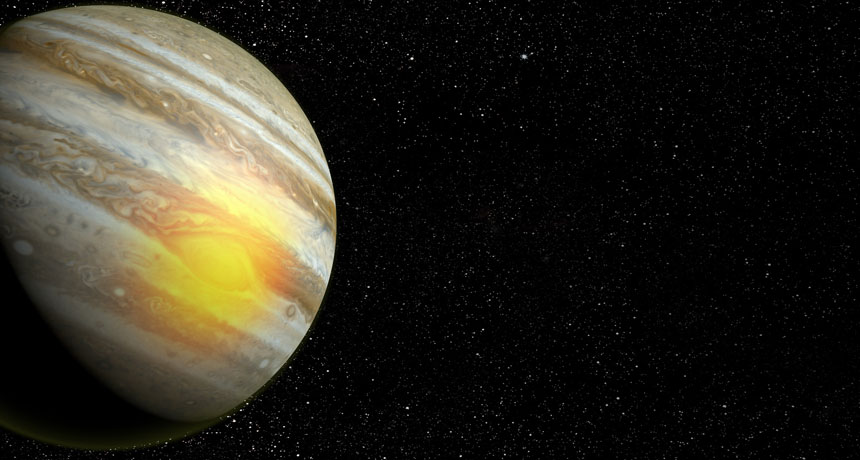Jupiter’s Great Red Spot is hot

On Jupiter, the Great Red Spot is the hottest thing going. Temperatures over the ruddy oval, a storm that could engulf Earth, are hundreds of degrees warmer than neighboring parcels of air and higher than anywhere else on the planet, researchers report online July 27 in Nature. Heat from the storm might help explain why Jupiter is unusually toasty given its distance from the sun.
Astronomers have known for over 40 years that Jupiter’s upper atmosphere is surprisingly hot. Mid-latitude temperatures are about 530° Celsius, roughly 600 degrees warmer than they would be if the sun was the only source of heat. Warmth must come from inside the planet, but until now, researchers had not come up with a satisfactory explanation for how.
Active storms all around Jupiter could be injecting heat into the atmosphere, suggest James O’Donoghue, an astrophysicist at Boston University, and colleagues. Using observations from NASA’s Infrared Telescope Facility in Hawaii, the researchers found that the temperature over the Great Red Spot is about 1,300° Celsius. Sound waves generated by turbulence might be heating the air above the storm, the researchers suggest. Similar heating (on a much smaller scale) has been seen on Earth, as air ripples over the Andes Mountains in South America.